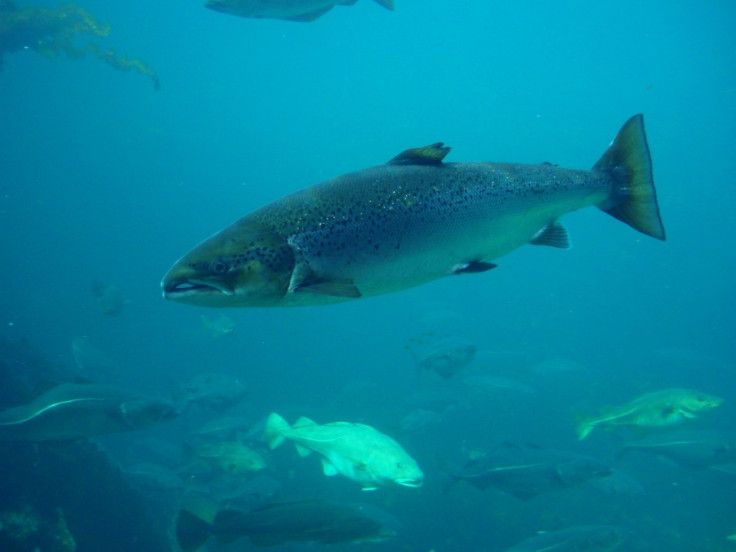Genetically Modified Salmon: What is it and is it Safe?

Consumer groups petitioned the U.S. government to classify genetically modified salmon under stricter food safety guidelines before it lands on American plates.
The Food and Drug Administration is currently investigating salmon that have foreign genes that allow the fish to grow twice as fast as normal.
Genetically modified salmon is currently classified as a new animal drug. The petition, headed by consumer groups Food & Water Watch, Consumers Union, and the Center for Food Safety, requests fish be classified as a food additive, which would subject it to a much more rigorous review process.
AquaBounty Technologies is seeking approval of its Atlantic salmon modified with genes from Pacific Chinook salmon and ocean pout, a type of ray-finned fish. The added genes allow the salmon to eat year-round, instead of only during spring and summer, so it can reach full maturity in 16 to 18 months instead of three years. In addition, genetically modified salmon could be bred in indoor pens, eliminating the need for oceanic pens.
One of the major concerns over genetically modified salmon, and genetically modified food in general, is whether it is safe to eat. So far, the answer is unclear, though the latest studies suggest genetically modified foods are safe to eat in general.
The first widespread genetically modified food was the tomato. In 1994, California company Calgene (now owned by Monsanto) bred the Flavr Savr tomato to resist rotting and stay fresh longer. These tomatoes were popular until 1997 when Calgene ceased production after the scientist who invented the variety publically expressed concern over whether the tomatoes could cause cancer.
In 2004, the U.S. National Academies of Sciences released a report that said to date, no adverse health effects attributed to genetic engineering have been documented in the human population.
In 2010, the European Commission Directorate-General for Research and Innovation echoed that statement, saying The main conclusion to be drawn from the efforts of more than 130 research projects, covering a period of more than 25 years of research, and involving more than 500 independent research groups, is that biotechnology, and in particular (genetically modified organisms), are not per se more risky than e.g. conventional plant breeding technologies.
The concerns over genetically modified salmon aren't simply about health effects though. Concerns over the environmental effects dominate many conversations about genetically modified organisms.
The fear is that larger genetically modified salmon in the wild could breed and compete with wild salmon, potentially upsetting the ecosystem. A computer model showed that 60 escaped genetically modified fish interbreeding with a native population of 60,000 wild fish would leave the native fish extinct within 40 generations, according to research published in 2000.
In an effort to prevent effects from escaped fish, AquaBounty officials said they would cultivate only female fish that are 99 percent sterile. Any fish that does escape would not be able to reproduce.
An FDA advisory panel concluded in September 2010 that genetically engineered fish are generally safe. AquAdvantage salmon is Atlantic salmon, and food from AquAdvantage salmon is as safe as food from other Atlantic salmon, Kathleen Jones, staff fellow at the FDA's Center for Veterinary Medicine, said in a statement.
Advocacy groups disputed the statement. The FDA is relying on company data from only a handful of fish, Wenonah Hauter, executive director of Food and Water Watch told ABC News in 2010. Such flimsy science isn't good enough to assure the public that this product is safe to eat.
On Wednesday, Hauter told Reuters that AquaBounty's own study showed that the genetically modified salmon may contain high levels of a hormone linked to breast, colon, prostate, and lung cancer.
The FDA did not issue a comment on the petition, as is its policy, and there is currently no timeline for a decision on the genetically modified salmon.
© Copyright IBTimes 2024. All rights reserved.





















